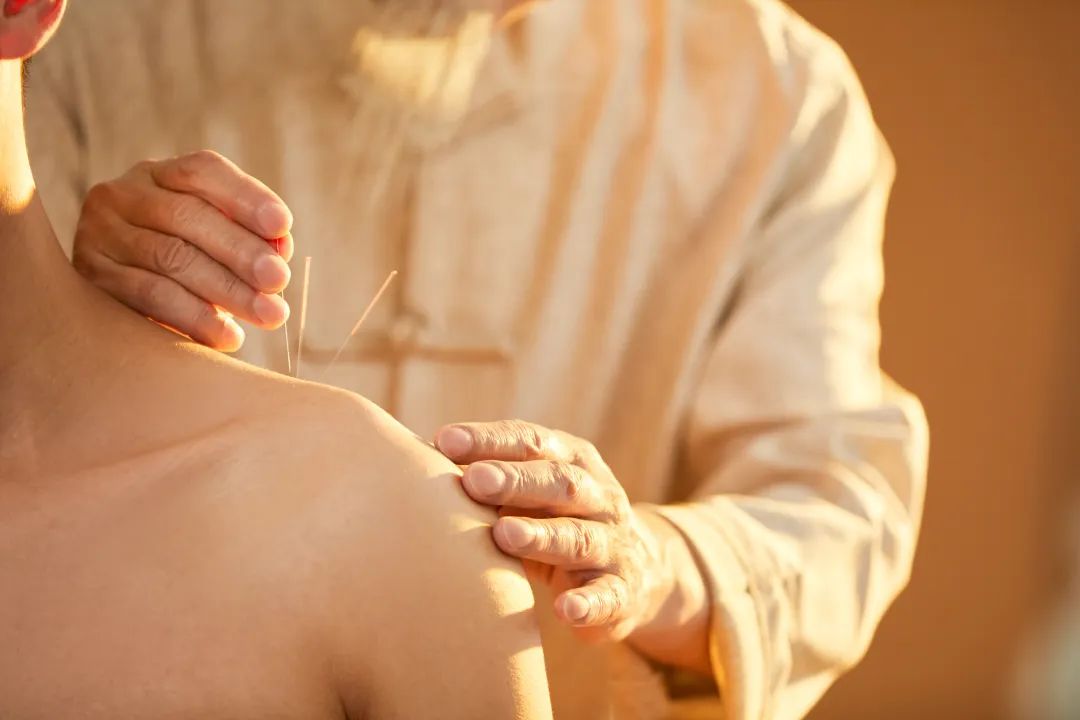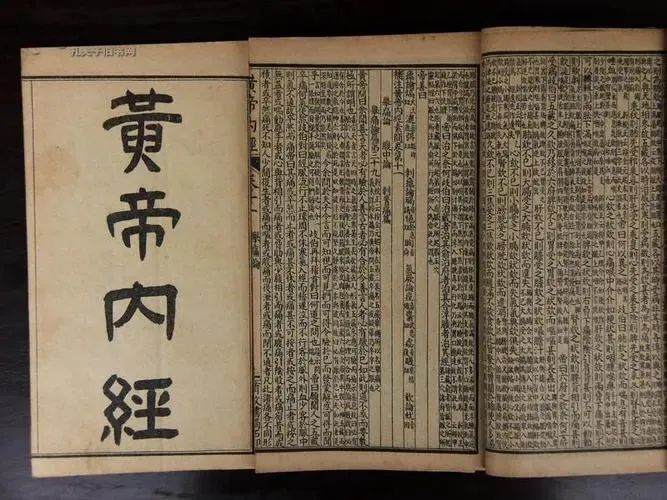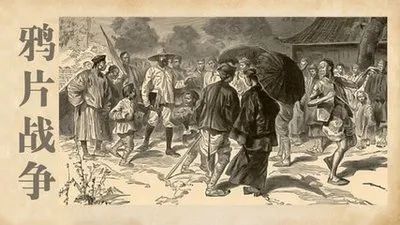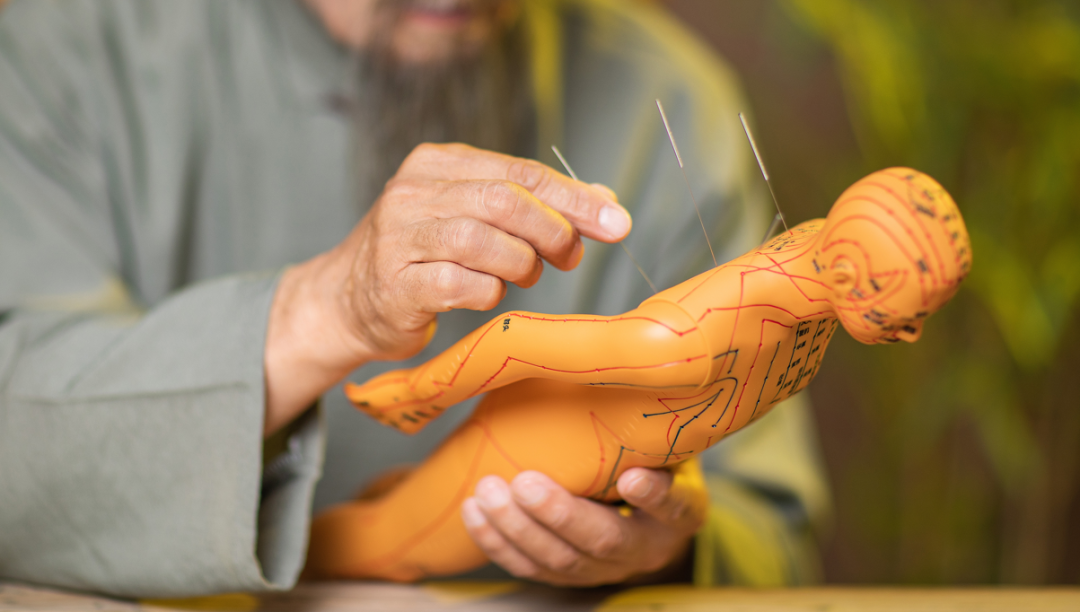 Acupuncture is a unique method of treating diseases in China, characterized by its “internal treatment of external diseases”. It treats various ailments through the conduction of meridians and acupoints, along with specific techniques.The history of Traditional Chinese Medicine (TCM) is profound and extensive. Acupuncture medicine is an essential component of traditional Chinese medicine, having developed over thousands of years. Today, it is increasingly respected and recognized by people in many countries and regions. Guided by classical TCM theories, acupuncture studies meridians, acupoints, and needling techniques to prevent and treat diseases. Modern acupuncture integrates contemporary biomedical theories and technologies, becoming an important part of global medicine.
Acupuncture is a unique method of treating diseases in China, characterized by its “internal treatment of external diseases”. It treats various ailments through the conduction of meridians and acupoints, along with specific techniques.The history of Traditional Chinese Medicine (TCM) is profound and extensive. Acupuncture medicine is an essential component of traditional Chinese medicine, having developed over thousands of years. Today, it is increasingly respected and recognized by people in many countries and regions. Guided by classical TCM theories, acupuncture studies meridians, acupoints, and needling techniques to prevent and treat diseases. Modern acupuncture integrates contemporary biomedical theories and technologies, becoming an important part of global medicine.

1. The Origin of AcupunctureThe technique of acupuncture originated in the Neolithic era. It is said that Fuxi, the ancestor of Chinese civilization, was the inventor of acupuncture. Fuxi not only created the Eight Trigrams but also taught the people to hunt and fish. As recorded by the Eastern Han dynasty scholar Huangfu Mi in the “Chronicles of the Emperors”: “He experimented with a hundred herbs and created nine needles”. The Southern Song dynasty scholar Luo Mi in “The History of the Road” noted: “He experimented with grass to create Bian”. Bian refers to Bian stone, which has a lancing effect. In the Neolithic site of Duolun County, Inner Mongolia, researchers discovered a 4.5 cm long Bian stone, one end flat with a curved edge for incision, and the other end a four-sided pyramid shape for bloodletting. It can be said that Bian stone is the foundation and precursor of later needle tools. 2. Historical Development of Acupuncture TheoryOver a long period of medical practice, acupuncture theory has gradually improved and developed.The “Huangdi Neijing” (Yellow Emperor’s Inner Canon) laid the theoretical foundation for acupuncture, forming a classical acupuncture medical theory system centered on the relationship between the body surface and internal organs, based on meridian theory. The “Nanjing” (Classic of Difficult Issues) further enriched and supplemented the acupuncture theory system, particularly regarding the Eight Extraordinary Meridians and Yuan points, addressing the deficiencies of the “Neijing”.
2. Historical Development of Acupuncture TheoryOver a long period of medical practice, acupuncture theory has gradually improved and developed.The “Huangdi Neijing” (Yellow Emperor’s Inner Canon) laid the theoretical foundation for acupuncture, forming a classical acupuncture medical theory system centered on the relationship between the body surface and internal organs, based on meridian theory. The “Nanjing” (Classic of Difficult Issues) further enriched and supplemented the acupuncture theory system, particularly regarding the Eight Extraordinary Meridians and Yuan points, addressing the deficiencies of the “Neijing”. The Wei and Jin Dynasties marked a period of development for acupuncture medicine. Acupuncture texts such as “Zhenjiu Jiayi Jing” (The Classic of Acupuncture and Moxibustion) and “Zhenjiu Dacheng” (Great Compendium of Acupuncture and Moxibustion) systematically constructed and perfected classical acupuncture medical theory, discussing the theory of organs and meridians, developing and confirming 349 acupoints, and detailing their locations, indications, and techniques, while also introducing acupuncture methods and treatments for common diseases. This was the second summary of acupuncture scholarship, greatly enriching needling techniques and clinical practice.The Tang and Song Dynasties saw significant development in acupuncture scholarship alongside economic and cultural prosperity. The Tang dynasty physician Sun Simiao illustrated the “Three People in the Ming Hall” in color in his work “Prescriptions Worth a Thousand Gold for Emergencies” and proposed methods for locating and applying Ah Shi points.The Tang Imperial Medical Bureau managed medical education, establishing four medical specialties and one pharmacy specialty, with acupuncture being one of the medical specialties, employing “one acupuncture doctor, one acupuncture teaching assistant, ten acupuncture masters, twenty acupuncture workers, and twenty acupuncture students”, pioneering formal education in acupuncture.The Song and Yuan Dynasties saw the formation of Neo-Confucianism through the inheritance and development of Confucian thought, resulting from the integration of Confucianism, Daoism, and Buddhism, advocating “investigating things to attain knowledge” and emphasizing “exhausting principles”. This ideological fusion and change in academic methods led to academic debates in the interpretation of acupuncture theory and clinical practice, with notable acupuncturists such as Wang Wei Yi, Wang Zhi Zhong, Dou Cai, and Dou Han Qing emerging.The Jin and Yuan DynastiesIn the “Zhou Yi Can Tong Qi”, revered by Daoists as the “King of Ancient Alchemical Texts”, the “Na Jia” method was first used for health preservation in the human body. Its discussions on the interaction of Yin and Yang, the relationship between husband and wife, and the Five Elements significantly guided the formation and development of acupuncture techniques such as the Twelve Meridians. Additionally, acupuncture methods like the Eight Methods of the Spirit Tortoise and the Eight Methods of Soaring were also influenced by Daoist theories. Academic debates promoted the enrichment and development of acupuncture theory, directly leading to the emergence of various acupuncture schools. It is evident that the ideological consciousness of ancient Chinese culture had a necessary influence on the formation of acupuncture academic schools.The Ming and Qing Dynasties were the peak periods of acupuncture scholarship, with many renowned physicians emerging and deepening research into acupuncture theory. Numerous acupuncture texts appeared, such as “Zhenjiu Daqian” (Great Compendium of Acupuncture), “Zhenjiu Juying” (Gathering of Acupuncture Essentials), and “Zhenjiu Sishu” (Four Books of Acupuncture), particularly Yang Jizhou’s “Zhenjiu Dacheng”, which compiled acupuncture works before the Ming dynasty, summarizing clinical experiences and providing rich content, serving as an important reference for future studies in acupuncture, marking the third summary of acupuncture scholarship.From the early Qing dynasty to the Opium War, physicians favored herbs over acupuncture, leading to a decline in acupuncture practice. In 1822, the Qing dynasty ordered the Imperial Medical Bureau to cease the use of acupuncture, abolishing the acupuncture department, citing that “needling and moxibustion are not suitable for serving the emperor”.
The Wei and Jin Dynasties marked a period of development for acupuncture medicine. Acupuncture texts such as “Zhenjiu Jiayi Jing” (The Classic of Acupuncture and Moxibustion) and “Zhenjiu Dacheng” (Great Compendium of Acupuncture and Moxibustion) systematically constructed and perfected classical acupuncture medical theory, discussing the theory of organs and meridians, developing and confirming 349 acupoints, and detailing their locations, indications, and techniques, while also introducing acupuncture methods and treatments for common diseases. This was the second summary of acupuncture scholarship, greatly enriching needling techniques and clinical practice.The Tang and Song Dynasties saw significant development in acupuncture scholarship alongside economic and cultural prosperity. The Tang dynasty physician Sun Simiao illustrated the “Three People in the Ming Hall” in color in his work “Prescriptions Worth a Thousand Gold for Emergencies” and proposed methods for locating and applying Ah Shi points.The Tang Imperial Medical Bureau managed medical education, establishing four medical specialties and one pharmacy specialty, with acupuncture being one of the medical specialties, employing “one acupuncture doctor, one acupuncture teaching assistant, ten acupuncture masters, twenty acupuncture workers, and twenty acupuncture students”, pioneering formal education in acupuncture.The Song and Yuan Dynasties saw the formation of Neo-Confucianism through the inheritance and development of Confucian thought, resulting from the integration of Confucianism, Daoism, and Buddhism, advocating “investigating things to attain knowledge” and emphasizing “exhausting principles”. This ideological fusion and change in academic methods led to academic debates in the interpretation of acupuncture theory and clinical practice, with notable acupuncturists such as Wang Wei Yi, Wang Zhi Zhong, Dou Cai, and Dou Han Qing emerging.The Jin and Yuan DynastiesIn the “Zhou Yi Can Tong Qi”, revered by Daoists as the “King of Ancient Alchemical Texts”, the “Na Jia” method was first used for health preservation in the human body. Its discussions on the interaction of Yin and Yang, the relationship between husband and wife, and the Five Elements significantly guided the formation and development of acupuncture techniques such as the Twelve Meridians. Additionally, acupuncture methods like the Eight Methods of the Spirit Tortoise and the Eight Methods of Soaring were also influenced by Daoist theories. Academic debates promoted the enrichment and development of acupuncture theory, directly leading to the emergence of various acupuncture schools. It is evident that the ideological consciousness of ancient Chinese culture had a necessary influence on the formation of acupuncture academic schools.The Ming and Qing Dynasties were the peak periods of acupuncture scholarship, with many renowned physicians emerging and deepening research into acupuncture theory. Numerous acupuncture texts appeared, such as “Zhenjiu Daqian” (Great Compendium of Acupuncture), “Zhenjiu Juying” (Gathering of Acupuncture Essentials), and “Zhenjiu Sishu” (Four Books of Acupuncture), particularly Yang Jizhou’s “Zhenjiu Dacheng”, which compiled acupuncture works before the Ming dynasty, summarizing clinical experiences and providing rich content, serving as an important reference for future studies in acupuncture, marking the third summary of acupuncture scholarship.From the early Qing dynasty to the Opium War, physicians favored herbs over acupuncture, leading to a decline in acupuncture practice. In 1822, the Qing dynasty ordered the Imperial Medical Bureau to cease the use of acupuncture, abolishing the acupuncture department, citing that “needling and moxibustion are not suitable for serving the emperor”. 3. Modern Development of Acupuncture TheorySince the founding of the People’s Republic of China, there has been a strong emphasis on inheriting and promoting the medical heritage of the nation, establishing TCM policies, and implementing a series of measures to develop TCM, leading to unprecedented popularization and advancement of acupuncture medicine. In the early 1950s, the first acupuncture therapy experimental institute was established, which is the predecessor of the Acupuncture Research Institute of the China Academy of Traditional Chinese Medicine. Subsequently, acupuncture research, medical, and educational institutions were established across the country, and “Acupuncture Science” became a required course for students in TCM colleges, with most TCM colleges offering acupuncture specialties, producing a wealth of acupuncture talent.
3. Modern Development of Acupuncture TheorySince the founding of the People’s Republic of China, there has been a strong emphasis on inheriting and promoting the medical heritage of the nation, establishing TCM policies, and implementing a series of measures to develop TCM, leading to unprecedented popularization and advancement of acupuncture medicine. In the early 1950s, the first acupuncture therapy experimental institute was established, which is the predecessor of the Acupuncture Research Institute of the China Academy of Traditional Chinese Medicine. Subsequently, acupuncture research, medical, and educational institutions were established across the country, and “Acupuncture Science” became a required course for students in TCM colleges, with most TCM colleges offering acupuncture specialties, producing a wealth of acupuncture talent. With the international dissemination of classical acupuncture medicine and the development of modern science and medicine, classical acupuncture medicine has gradually intersected with biomedical theories and technologies. Scientific methodology, biomedical theories, and modern scientific techniques have had a significant impact, leading to the gradual formation of a new acupuncture theory, known as modern acupuncture medicine. In the early 17th century, British physiologist William Harvey experimentally confirmed the theory of blood circulation, pioneering new methods for physiological and medical research: logical reasoning and experimentation. Building on this, French philosopher, mathematician, and scientist René Descartes further summarized and formed a complete scientific method, indicating that scientific research is a process of drawing correct conclusions through correct evidence and reasoning. The introduction of scientific methodology rapidly advanced modern medicine and also influenced the development of acupuncture medicine. The earliest literature on clinical efficacy studies of acupuncture can be traced back to 1872.To this day, the evaluation of acupuncture efficacy remains a hot research topic in the field of acupuncture medicine.Subsequently, scientific and technological methods have gradually been applied to acupuncture clinical practice and research, giving rise to acupuncture therapies and auxiliary tools such as steel needles, magnetic needles, fiber optic needles, electrical acupuncture, buried thread therapy, point injection, and moxibustion devices.At the same time, major medical practitioners have begun to attempt to explain the mechanisms of acupuncture from the perspective of modern biomedicine, leading to the emergence of theories such as meridian conduction theory, acupuncture anesthesia, auricular acupuncture, and scalp acupuncture.These new theories and methods have opened new fields of acupuncture research, promoting the development of modern acupuncture medicine.
With the international dissemination of classical acupuncture medicine and the development of modern science and medicine, classical acupuncture medicine has gradually intersected with biomedical theories and technologies. Scientific methodology, biomedical theories, and modern scientific techniques have had a significant impact, leading to the gradual formation of a new acupuncture theory, known as modern acupuncture medicine. In the early 17th century, British physiologist William Harvey experimentally confirmed the theory of blood circulation, pioneering new methods for physiological and medical research: logical reasoning and experimentation. Building on this, French philosopher, mathematician, and scientist René Descartes further summarized and formed a complete scientific method, indicating that scientific research is a process of drawing correct conclusions through correct evidence and reasoning. The introduction of scientific methodology rapidly advanced modern medicine and also influenced the development of acupuncture medicine. The earliest literature on clinical efficacy studies of acupuncture can be traced back to 1872.To this day, the evaluation of acupuncture efficacy remains a hot research topic in the field of acupuncture medicine.Subsequently, scientific and technological methods have gradually been applied to acupuncture clinical practice and research, giving rise to acupuncture therapies and auxiliary tools such as steel needles, magnetic needles, fiber optic needles, electrical acupuncture, buried thread therapy, point injection, and moxibustion devices.At the same time, major medical practitioners have begun to attempt to explain the mechanisms of acupuncture from the perspective of modern biomedicine, leading to the emergence of theories such as meridian conduction theory, acupuncture anesthesia, auricular acupuncture, and scalp acupuncture.These new theories and methods have opened new fields of acupuncture research, promoting the development of modern acupuncture medicine.

